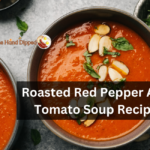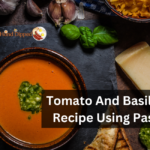In countless recipes around the globe, beans are a versatile and nutritious ingredient. From chili to stew, beans lend substance and flavor to various dishes. However, cooking beans from scratch can be time-consuming, so a pressure cooker is handy. This article will discuss how to cook beans in a pressure cooker, including the various types of beans, cooking times, and essential strategies for achieving perfect results.
Due to their versatility, affordability, and nutritional value, beans are a staple in many cuisines around the globe. Beans have a position in your kitchen, whether you’re a vegetarian seeking plant-based protein or a fan of their earthy, comforting flavors.
While canned beans are convenient, preparing dried beans from scratch has several benefits. It allows you to control the legumes’ flavor, texture, and overall quality. However, conventional methods of stovetop cooking can take time and effort. That is why a pressure cooker is functional.
In this guide, we will explore the discipline of pressure-cooking beans. We will discuss various types of beans, techniques for soaking them, and, most importantly, how long you should cook them to attain the ideal tenderness. Let’s get going.
Why Use A Pressure Cooker?
Before discussing cooking periods, let’s examine why a pressure cooker is an excellent choice for cooking beans.
1. Time-Efficiency: Traditional legume cooking methods require hours of simmering, but a pressure cooker significantly reduces this time. What could take hours on a cooktop can be completed in a fraction of the time using a pressure cooker.
2. Energy Savings: Pressure cookers are energy-efficient because they reduce cooking time, saving time and money.
3. Nutrient Retention: Beans cooked in a pressure cooker retain more nutrients than when cooked in an uncovered pot due to the pressure cooker’s sealed environment.
4. Tender Results: Pressure cooking results in exceptionally tender legumes suitable for various recipes.
Types Of Beans
Before discussing cooking times, knowing which type of beans you’re working with is essential because various beans have varying cooking requirements. Here are some prevalent bean varieties:
1. Black Beans
Popular in Latin American and Caribbean cuisines are black beans. They possess a robust, earthy flavor and a distinct, glossy, black epidermis. They are frequently incorporated into soups, stews, and rice dishes such as “arroz con frijoles.”
2. Kidney Beans
Reddish-brown kidney beans are renowned for their robust, earthy flavor. They are a fundamental ingredient in chili, bean salads, and the classic “rajma” in Indian cuisine.
3. Chickpeas (Garbanzo Beans)
Chickpeas are small, round, faintly nutty-flavored beans. They are the primary constituent in hummus, falafel, and other Mediterranean and Middle Eastern dishes.
4. Lentils
There are various hues of lentils, including green, brown, and red. Lentils cook relatively rapidly and do not require soaking, unlike other beans. They are excellent in soups, salads, and stews.
Cooking Times Of Beans
Cooking time for beans in a pressure cooker depends on variables, such as the variety of beans and whether or not you soaked them beforehand.
Soaking Beans
If you decide to soak your legumes, you will significantly reduce their cooking time. Additionally, soaked legumes tend to cook more evenly. Here is a general guideline for immersion times:
Chickpeas, Black Beans, and Kidney Beans: Soak for 4 to 8 hours or overnight.
Lentils do not need to be soaked but can benefit from a quick rinse.
Timing For Cooking Various Beans
Here are approximate cooking durations for common bean varieties under pressure:
- Black Beans: Unsoaked 20 to 25 minutes; Soaked: 8 to 12 minutes.
- Kidney Beans: Unsoaked – 20-25 minutes, Soaked – 8-12 minutes.
- Chickpeas: Unsoaked – 30-35 minutes, Soaked – 10-15 minutes.
- Lentils: Unsoaked – 8-12 minutes (varies by type and color).
It is essential to note that these timings are guidelines only. The precise cooking time may vary depending on the model of your pressure cooker and your location’s altitude. It is advisable to consult the manual of your pressure cooker for specific instructions.
The Pressure Cooking Process
After sorting, rinsing, and possibly soaking the beans, it is time to begin pressure cooking. Here is a detailed procedure:
1. Place the Beans: Place the Beans in the Pressure Cooker: Place the soaked (or unsoaked) beans in the pressure cooker.
2. Add Water: Cover the beans with sufficient water to submerge them. Two inches of water should be above the legumes.
3. Seasoning (Optional): You can enhance the flavor by adding salt, garlic, or herbs. However, avoid introducing acidic ingredients such as tomatoes at this point because they can cause the beans to become rigid.
4. Secure the Lid: Make sure the pressure cooker lid is securely sealed.
5. Pressure Cooking: Start the pressure cooker according to the manufacturer’s instructions. Select the bean or legume setting and modify the cooking time using the “+/-” buttons on most electric pressure cookers.
6. Cooking Time: The cooking time will commence once the pressure cooker has reached the desired level. Please refer to the preceding section for approximate cooking periods based on soaking.
7. Release Pressure: Once the cooking time is complete, relieve the pressure according to the instructions for your pressure cooker. There are two standard methods: rapid release and natural release.
Beans Preparation For Pressure Cooking
Regardless of the type of bean you’re preparing, there are some general procedures to follow when preparing them:
Before rinsing, spread the beans on a clean surface and remove any residue, such as small stones or broken beans. After sorting them, thoroughly cleanse them under cold water to remove any dust or residue.
Soaking beans is not required, but it can reduce cooking time and simplify digestion. Soaking also facilitates uniform preparation. Here is a general rule of thumb regarding immersion times:
Chickpeas, Black Beans, and Kidney Beans: Soak for four to eight hours or overnight.
Lentils do not need to be soaked but can benefit from a quick rinse.
Seasoning Your Beans
Some ingredients, such as salt and acidic components (e.g., tomatoes or vinegar), can alter the texture of beans if introduced too early, specifically salt and sour components. It is best to season your beans when tender after pressure heating. Then, you can incorporate them into different recipes or strengthen them to flavor.
Cooking legumes in a pressure cooker is a culinary game-changer. It drastically reduces cooking time, conserves energy, and produces tender and precisely cooked beans. You can enjoy a wide variety of bean-based dishes with relative ease if you know the proper techniques and cooking times.
Thank you for reading…..










